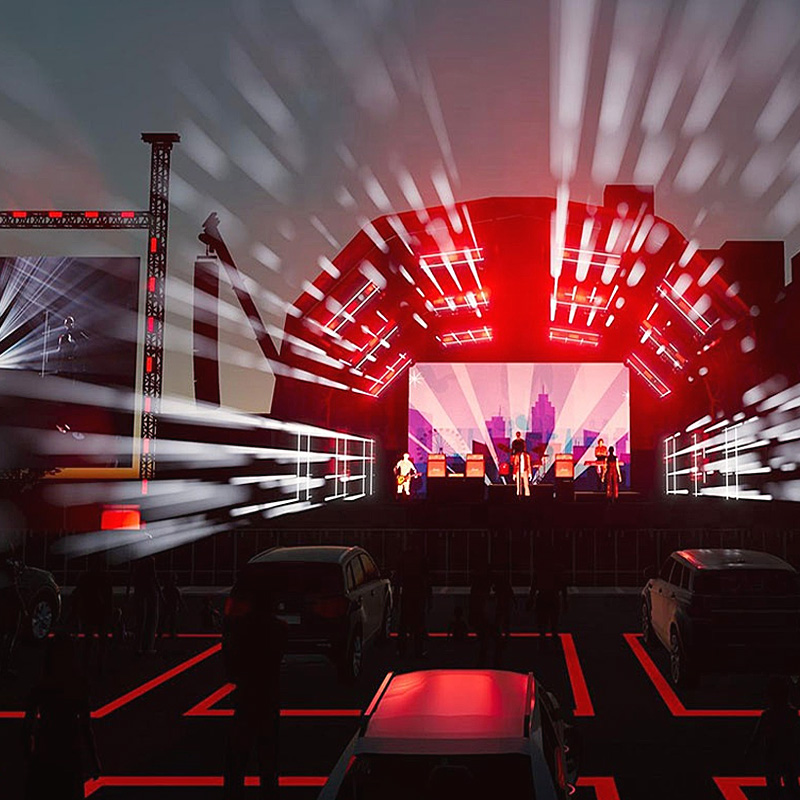Industry news
Analyze various chromaticity processing technologies for LED display screens.
The colorful nature is so beautiful, unfortunately, the existing LED screens cannot fully reproduce this beautiful scenery. Although LEDs belong to monochromatic light, each color of LED still has a half wave width of about 30-50nm, so its color saturation is limited.
1、 3+2 multi primary chromaticity treatment method:
In recent years, there has been a keen discussion in the field of flat panel displays on 3+3 multi primary color displays (red, green, blue plus yellow, cyan, purple) to expand the color gamut and reproduce richer natural colors. So, can LED screens achieve 3+3 multi primary color display?
We know that within the visible light range, yellow and cyan are monochromatic light, and we already have high saturation yellow and cyan LEDs. Purple is a polychromatic light, while single chip purple LEDs do not exist. Although we cannot achieve red, green, blue, yellow, blue, and purple 3+multi primary color LED screens. However, it is feasible to study LED screens with multiple primary colors of red, green, blue, yellow, and cyan 3+2. Due to the presence of a large number of high saturation yellow and cyan colors in nature; Therefore, this study has certain value.
Guided by the above three principles; According to the law of the center of gravity, we can find a 3+2 multi primary chromaticity treatment method. However, in order to truly achieve a 3+2 multi primary color full color screen, we still need to overcome the insufficient brightness of yellow and blue LEDs; Difficulties such as significant cost increases are currently limited to theoretical exploration.
2、 Color restoration processing:
The birth of pure blue and pure green LEDs has made full color P3 LED displays highly sought after in the industry for their wide color gamut range and high brightness. However, due to the significant deviation between the chromatic coordinates of red, green, and blue LEDs and the chromatic coordinates of red, green, and blue in PAL television (see Table 1), the color reproduction of LED full color screens is poor. Especially when expressing a person’s skin color, there is a significant visual deviation. As a result, color restoration processing technology emerged. Here, the author recommends two methods for color restoration processing:
1. Transform the color coordinate space of the red green blue three primary color LED to make the three primary color coordinates between the LED and the PAL TV as close as possible, thereby greatly improving the color reproduction of the LED display screen. However, this method significantly reduces the color gamut range of LED displays, resulting in a significant decrease in the color saturation of the screen.
2. Properly correct only the skin color gamut that is most sensitive to the human eye; And for color gamut that is not sensitive enough to other human eyes, reduce the original color saturation as much as possible. By doing so, a balance can be achieved between color restoration and color saturation.
3、 Selection of primary color wavelength:
With the increasing demand for LED screens, it is no longer possible to meet people’s picky eye by only subdividing and filtering the LED color coordinates. Therefore, it is feasible to comprehensively correct the display screen to improve chromaticity uniformity.
We have found that even the first international brand of LED of the same grade still has significant wavelength deviation and color saturation deviation, and this deviation range greatly exceeds the threshold for human eyes to distinguish green color difference. Therefore, it is of great significance to carry out color uniformity correction.
In the CIE1931 chromaticity diagram, according to the center of gravity law, we found that any point in the G range (□ abcd) where green is mixed with a certain proportion of red and blue can adjust the color coordinates of the mixed color to the intersection point O of the straight line cR and the straight line dB
Although it can greatly improve chromaticity uniformity. However, after correction, the color saturation significantly decreases. At the same time, another prerequisite for using red and blue to correct the uniformity of green chromaticity is to use a centralized distribution of the red, green, and blue LEDs within the same pixel as much as possible to make the mixing distance of red, green, and blue as close as possible, in order to achieve better results. At present, the commonly used method in the industry is LED uniform distribution, which will cause confusion in color uniformity correction. In addition, the measurement of the color coordinates of tens of thousands of red, green, and blue LEDs is also an extremely challenging task. We have given a hint about this.
